- TOP
- Search Criteria
- Kanzume: Exploring the World of Japanese Canned Food

STORY
Kanzume: Exploring the World of Japanese Canned Food
It's cheap, it's long-lasting, and it's convenient. Canned food can be found in supermarkets throughout the world and it ranges from fish and meat to vegetables and fruit. The type of canned food you're familiar with might vary greatly depending on the country you're in, too. So what kind of canned food can you find in Japan? In the last few years there has been an increasing interest in canned food, and more and more new products are popping up on the shelves. Lately, more and more recipes using canned food have been popping up as well. What was once considered as a simple long-lasting food has now become almost a novelty, with brands making fancy gourmet canned food. In Japan it's also considered a good emergency food for its long shelf life.
Read on to find out about usual, unusual and downright strange things you can find in a can in Japan!

Let's start with one of the most common canned items in Japan: fish. While you'll find plenty of tuna, salmon and other species, lately mackerel seems to be the star of the show. Rediscovered as a healthy food in the last few years, you'll find countless version of it on the shelves. Plain, soy sauce flavor, and my favorite, boiled in miso (in the picture) are the most common.

For me, the most unusual canned fruit I found was lychee! It's hard to find it fresh in Japan, so this can be a nice change. It also comes already peeled and ready to eat.

How about traditional Japanese desserts in a can? In almost every supermarket, right next to the canned fruit you'll find mitsumame, an old-school Japanese treat made of fruit, red beans and cubes of agar jelly. It's mildly sweet and has some fun textures, definitely give it a try!
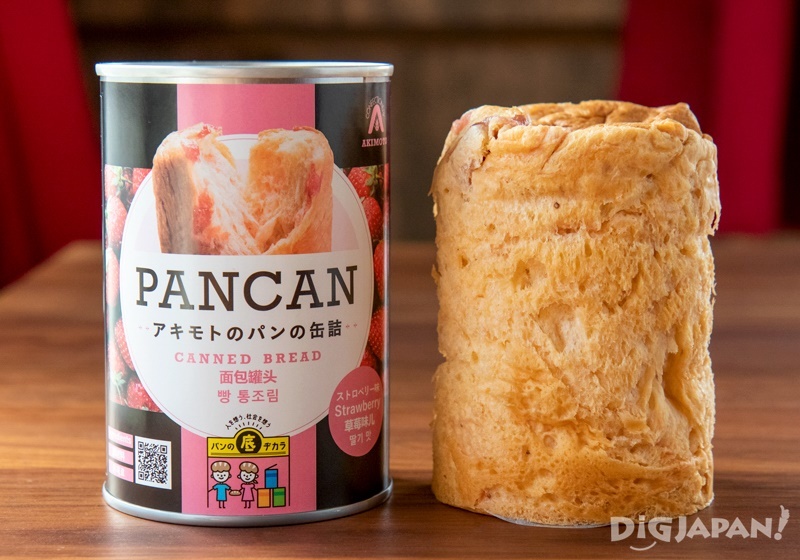
Ok, but how about bread in a can? This one really surprised me when I saw it the first time. Part emergency food and part novelty, it can be a fun souvenir or present. The bread is actually quite fluffy, and if you soak the can in warm water for a bit before opening it you'll get the aroma of freshly baked bread!

Yakitori (grilled chicken skewers), possibly the number one food to accompany your drink. Yes, they also come in a can! They even come in different flavors like soy sauce, salt, yuzu pepper, or like the one I got, garlic pepper! The cans often feature really cool bar-themed designs.

Another staple of the category is tsukune or chicken meat balls. Again, I love the can design and the meat is so tender with a juicy sauce. Just a minute in the microwave brings out the aroma and atmosphere of a Japanese bar.

This is a recent find for me and one of my current favorites. Quail eggs! Depending on where you live you might find it unusual, it certainly is for me. Their sweet seasoning gives them an irresistible aroma.

Asking some Japanese people what canned food was a good otsumami, sanma kabayaki seems to be a staple. Sanma is Pacific Saury and kabayaki is a type of preparation where the fish is dipped in a sweet soy sauce before getting cooked. Delicious!

When you're looking for something to go with your cold one, what's one of the things you think of? Isn't it squid? It certainly is in Japan! Squid, prepared in many different ways, can be found on most bar menus. If you're like me and are put off by the squishy, hard to chew texture of squid, the canned version is for you! It's very tender and it's also soaked in a delicious sauce.

Lastly, we have a whole line of "premium" canned snacks that seems to have gained a lot of popularity of late. While regular canned food usually costs about 1-2 dollars per can, these range from 4 to even 10 dollars! The one in the picture above is honey mustard bacon, while other choices include delicacies like oysters and sea urchin, or select regional specialties like smoked scallops from Hokkaido.
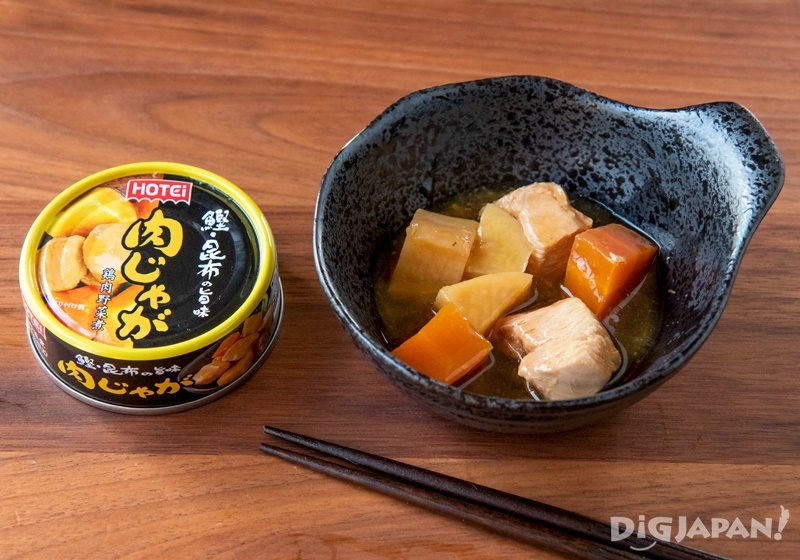
Nikujaga, a cozy winter dish made of stewed potatoes, meat and other ingredients was a surprise to find in can form. And it's really good, too! This one had ultra-soft chicken, potatoes and carrots. A very quick alternative when you don't have time to make it from scratch.

Japanese people love curry, so much so that it's almost considered a Japanese dish now. And that creamy, fragrant curry can also be found in cans! Just heat it up, add it to rice or naan bread and you'll have a respectable curry meal.
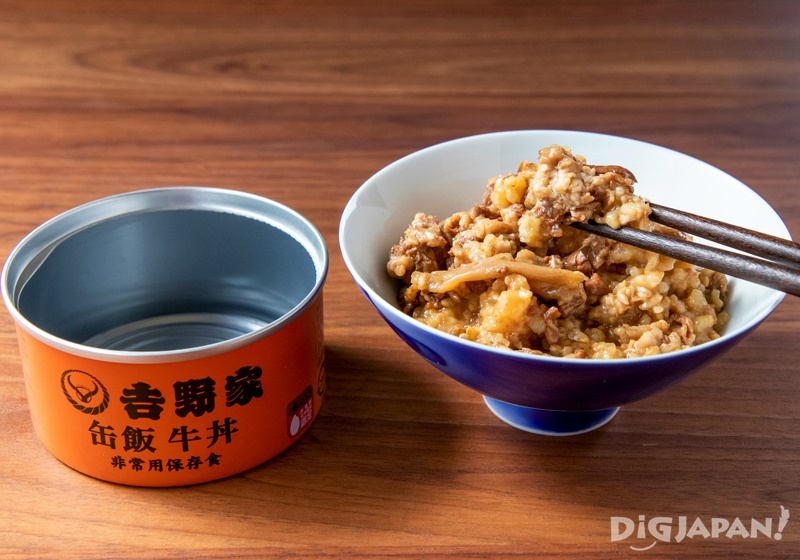
I discovered that even chain restaurants make canned versions of their food! If you've been to Japan you might know Yoshinoya, a restaurant that specializes in gyudon (rice bowl topped with beef). This is a Yoshinoya beef bowl can, and it comes complete with rice in it! While the portion is smaller than what you get at the restaurant, it's fun to see that you can get a taste of Yoshinoya readily at home when you feel like it.

Among the most well-known can bars, mr.kanso has several locations all over Japan and stocks hundreds of regular, rare, and strange cans of food. They even have their own original can line. Here you can try all kinds of canned food and pair it with drinks. Some of mr.kanso's original canned food includes takoyaki, Japanese omelet, super spicy curry and okonomiyaki!
Website (Japanese-only): http://www.cleanbrothers.net/kanso.html
I hope you enjoyed this journey into the world of Japanese canned food. What's canned food like in your country? Which ones in the list did you find unusual? If you want to know more about Japanese food, check out our other articles about yuzu, oden, nabe and osechi ryori!
*The above article is based on information from April 2021.
About the Author
Laura is an Italian living and working in Tokyo. She loves exploring hidden and unknown places, taking pictures and listening to Punk Rock music. When she’s not busy doing the above, she might enjoy a craft beer or play the sanshin (an Okinawan instrument similar to a shamisen).
Read on to find out about usual, unusual and downright strange things you can find in a can in Japan!
Saba: The Mackerel Health Boom

Miso-cooked mackerel
Let's start with one of the most common canned items in Japan: fish. While you'll find plenty of tuna, salmon and other species, lately mackerel seems to be the star of the show. Rediscovered as a healthy food in the last few years, you'll find countless version of it on the shelves. Plain, soy sauce flavor, and my favorite, boiled in miso (in the picture) are the most common.
Fruit and Sweets
For a country where fruit is often prohibitively expensive, it's no wonder that Japan would try to enjoy fruit in all possible forms. Canned fruit is extremely common and it includes oranges, peaches, pineapple and more. But it doesn't stop here, as you can even find traditional Japanese desserts in can form!
Lychee
For me, the most unusual canned fruit I found was lychee! It's hard to find it fresh in Japan, so this can be a nice change. It also comes already peeled and ready to eat.

Mitsumame
How about traditional Japanese desserts in a can? In almost every supermarket, right next to the canned fruit you'll find mitsumame, an old-school Japanese treat made of fruit, red beans and cubes of agar jelly. It's mildly sweet and has some fun textures, definitely give it a try!

Canned bread
Ok, but how about bread in a can? This one really surprised me when I saw it the first time. Part emergency food and part novelty, it can be a fun souvenir or present. The bread is actually quite fluffy, and if you soak the can in warm water for a bit before opening it you'll get the aroma of freshly baked bread!
Otsumami in a Can: The Perfect Sake Snacks!
Canned food can pack a pretty rich flavor, which makes it a perfect otsumami (snack to enjoy with a drink). A lot of dishes that are considered otsumami in Japan also come in canned form!
Yakitori
Yakitori (grilled chicken skewers), possibly the number one food to accompany your drink. Yes, they also come in a can! They even come in different flavors like soy sauce, salt, yuzu pepper, or like the one I got, garlic pepper! The cans often feature really cool bar-themed designs.

Tori tsukune
Another staple of the category is tsukune or chicken meat balls. Again, I love the can design and the meat is so tender with a juicy sauce. Just a minute in the microwave brings out the aroma and atmosphere of a Japanese bar.

Boiled quail eggs
This is a recent find for me and one of my current favorites. Quail eggs! Depending on where you live you might find it unusual, it certainly is for me. Their sweet seasoning gives them an irresistible aroma.

Sanma kabayaki
Asking some Japanese people what canned food was a good otsumami, sanma kabayaki seems to be a staple. Sanma is Pacific Saury and kabayaki is a type of preparation where the fish is dipped in a sweet soy sauce before getting cooked. Delicious!

Seasoned squid
When you're looking for something to go with your cold one, what's one of the things you think of? Isn't it squid? It certainly is in Japan! Squid, prepared in many different ways, can be found on most bar menus. If you're like me and are put off by the squishy, hard to chew texture of squid, the canned version is for you! It's very tender and it's also soaked in a delicious sauce.

Honey mustard-flavored thick-cut bacon
Lastly, we have a whole line of "premium" canned snacks that seems to have gained a lot of popularity of late. While regular canned food usually costs about 1-2 dollars per can, these range from 4 to even 10 dollars! The one in the picture above is honey mustard bacon, while other choices include delicacies like oysters and sea urchin, or select regional specialties like smoked scallops from Hokkaido.
Even Classic Dishes Shrink Down to Can Size!
I've always considered canned food more as a side dish, a small ingredient you add when you need that extra thing on the dinner table. So I was surprised to find that Japanese cans can also contain actual Japanese dishes!
Nikujaga
Nikujaga, a cozy winter dish made of stewed potatoes, meat and other ingredients was a surprise to find in can form. And it's really good, too! This one had ultra-soft chicken, potatoes and carrots. A very quick alternative when you don't have time to make it from scratch.

Butter chicken curry
Japanese people love curry, so much so that it's almost considered a Japanese dish now. And that creamy, fragrant curry can also be found in cans! Just heat it up, add it to rice or naan bread and you'll have a respectable curry meal.

Yoshinoya kan-meshi gyudon
I discovered that even chain restaurants make canned versions of their food! If you've been to Japan you might know Yoshinoya, a restaurant that specializes in gyudon (rice bowl topped with beef). This is a Yoshinoya beef bowl can, and it comes complete with rice in it! While the portion is smaller than what you get at the restaurant, it's fun to see that you can get a taste of Yoshinoya readily at home when you feel like it.
Want More? Go All-in With a Can Bar!
I wasn't joking when I said that canned food has seen a rise in popularity. For canned food enthusiasts and the curious, now you can explore the world of canned food at a Kanzume Bar (缶詰バー). Kanzume is the Japanese word for canned food which is what these bars specialize in.
Among the most well-known can bars, mr.kanso has several locations all over Japan and stocks hundreds of regular, rare, and strange cans of food. They even have their own original can line. Here you can try all kinds of canned food and pair it with drinks. Some of mr.kanso's original canned food includes takoyaki, Japanese omelet, super spicy curry and okonomiyaki!
Information
mr.kanso | ミスターカンソWebsite (Japanese-only): http://www.cleanbrothers.net/kanso.html
I hope you enjoyed this journey into the world of Japanese canned food. What's canned food like in your country? Which ones in the list did you find unusual? If you want to know more about Japanese food, check out our other articles about yuzu, oden, nabe and osechi ryori!
*The above article is based on information from April 2021.
About the Author
Laura is an Italian living and working in Tokyo. She loves exploring hidden and unknown places, taking pictures and listening to Punk Rock music. When she’s not busy doing the above, she might enjoy a craft beer or play the sanshin (an Okinawan instrument similar to a shamisen).

Liked this story? Like DiGJAPAN!
on Facebook for daily updates!
THIS ARTICLE IS BASED ON INFORMATION FROM 05 14,2021 Author:DiGJAPAN! Editorial Team













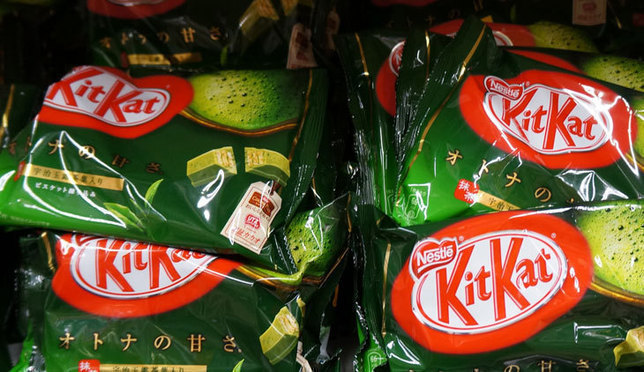


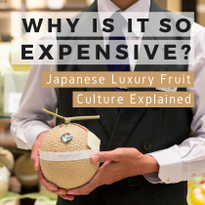





NEW COMMENT | 0 COMMENTS
Open a DiGJAPAN!
account to comment.
Open a DiGJAPAN! Account